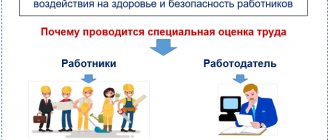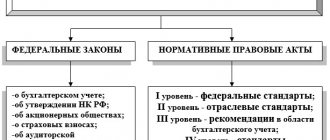Introductory information
It doesn’t matter what the reason is - either the approaching winter, or the lack of need for buildings. There should always be a conservation project for buildings and structures. It is also necessary to clearly understand what goals are being pursued and what tasks are facing the people carrying out the process. Let's look at the introductory information from which we will build. Let's assume that a building is being constructed. But there is no way to complete it before the start of the winter period. And according to technology, construction processes must be carried out at above-zero temperatures. Therefore, it became necessary to postpone the entire range of necessary work until a better time. And for this it is necessary to protect the object from precipitation and temperature changes.
Factors influencing the conservation object
The safety of machines, machines and production lines is ensured in accordance with the technical specifications by the stages of equipment conservation. The project should also include a set of works to protect engineering systems, communications and buildings, paying special attention to climatic factors and the response to their impact from goods and materials. The process of long-term storage is characterized by a number of external influences:
- temperature factors - in buildings with heating turned off for the period of conservation, temperature changes occur due to seasonal weather changes;
- humidity - even with natural ventilation, there are places in the premises where moisture accumulates, which, as it evaporates, increases the humidity level throughout the entire area;
- dust - it penetrates through cracks and ventilation holes, settles on surfaces, and absorbs moisture;
- the appearance of mold, fungi, colonies of microorganisms, rotting in wooden structures, rodent activity.
As these impacts accumulate, a response from the stored objects arises and acquires dangerous proportions. This is condensation, violation of the integrity of individual parts, corrosion of metal surfaces, damage to the paintwork.
Main goal pursued
The highest priority should be protection from moisture. Why? As you know, water, when it turns into ice, increases in volume. If you do not protect the joints and seams from moisture, then the structural elements will begin to collapse and deform after the onset of frost. To protect against precipitation, temporary simple structures made of inexpensive and accessible materials are erected over unfinished objects. Window and door openings must be closed using roofing felt or glassine. You can use plywood panels and, in very rare cases, polyethylene film (it is convenient to seal non-standard shaped holes). In order not to resolve issues during the process, it is necessary to create an adequate and detailed project for the conservation of the building.
Conservation of stone houses at different stages
Gleb Tikhonov
The process of conservation of a stone house depends on the stage at which construction stopped. If a box is removed, but there is no roof, or several rows are folded, the walls must be covered with insulating material - reinforced film. It is better to support individual partitions.
As for preserving the covered box, Gleb recommends protecting all openings from rain and snow, for example, with geotextiles or roofing felt. Be sure to leave gaps for ventilation. Water supply - drain and shut off.
Members of the forum also agree with the professional; vrupasov from Cherepovets calmly leaves the box to spend the winter.
vrupasovFORUMHOUSE Member
It is necessary to cover the top edge of the masonry, and to prevent it from being blown away by the wind, press it down. If the first row is lower than half a meter from the ground, it is advisable to make aprons. I have already overwintered five rows, now ten will overwinter.
About the foundation
Let's start with the very basics. It is better to leave the foundation and ground floor of a stone house (as well as concrete and brick) for a year without load. This is necessary so that it settles and settles. Wooden buildings do not need such a period of time. After all, they are lighter and create less load on the base. Considering that in our latitudes the snow cover regularly exceeds 0.5, the foundation must be prepared in the most careful manner. The first step is to carefully inspect the base. If you find cracks and leaks into which water can seep, they must be sealed. If weather conditions no longer allow working with cement mortar, then the foundation walls must be closed. For this, as a rule, roofing material is used. If waterproofing is already provided, then you just need to close its upper part so that precipitation does not fall on it. You also need to take care that melt water does not accumulate near the foundation strip. To do this, grooves are laid around the perimeter. If the terrain does not allow this, then it is necessary to take care of waterproofing.
What fixed assets are subject to conservation?
You can preserve any object that belongs to the OS. That is, which is recorded on account 01. To indicate an item on this account, the following conditions must be met:
- The OS is used as part of production; it is required either for the operation of the company or for managing it. For example, a company car belongs to the OS, but a marble monument does not.
- The facility has been in operation for more than a year. That is, objects of short-term use (packaging, etc.) will not be classified as fixed assets.
- The company has no plans to resell the item. For example, property acquired for further sale is not classified as fixed assets.
- The object is expected to bring benefits. For example, the company’s land is used for planting vegetables for their further sale.
Fixed assets will include buildings, service vehicles, equipment, office equipment, and natural resources.
ATTENTION! Natural resources are not conserved because they are not subject to depreciation. That is, the motivation to carry out the event is lost.
About the foundation with a basement
In this case, quite serious problems arise. Preservation of a building requires that the temporary shelter be secure. After all, if water leaks, it can tear the entire structure. In this case, there is one popular method: you need to throw plastic bottles, one-third filled with water, into the basement. Then, when the water freezes, most of the expansion forces will be taken on by bottles immersed in the volume of ice and more susceptible to compression, and the basement will not be damaged. This method allows you to ensure the safety of the structure, but it is desirable to have 3-4 large containers per square meter.
Why is conservation needed?
Preservation of an object is necessary in order to prevent damage, destruction, and deterioration of the technical characteristics of equipment, communications and the construction site itself as a whole.
In addition, conservation of the site is necessary to ensure the safety of the population and the environment. That is, the construction site and the construction site must be in a condition that ensures the strength, stability and safety of structures, equipment and materials. This is stated in paragraph 3 of the Rules, approved by Decree of the Government of the Russian Federation of September 30, 2011 No. 802.
Temporary roofing
Construction may stop during the construction of walls and interfloor ceilings. In this case, it is necessary to protect horizontal sections of the structure from precipitation. This is especially true in cases where the walls are made of slotted bricks or are multi-layered (for example, stone and concrete blocks are combined). It is necessary to put together a lattice of boards over the unfinished building. It is covered with roofing felt on top. This is a temporary roof. You can also build a rafter structure with a sheathing of uncut boards and cover it with roofing felt on top. There is no need to cover the outside walls with anything. Nothing will happen to facing or rough brickwork in winter. Water will drain from vertical surfaces. And the moisture that the pores do absorb has an insignificant volume. Therefore, it will not cause destruction.
Construction stages
The construction of a house, regardless of its type, is carried out in stages. If we discard preliminary manipulations, such as project preparation, we get four stages.
- Foundation.
- Walls (frame or box).
- Roof.
- Finishing (internal, facade if necessary).
Ideally, when opportunities permit, construction is completed in one season. In practice, significant downtime between stages is possible. If the foundation is often left to winter and gain strength, then they try to combine the following stages.
A box with a roof, even if the roofing material is temporary roofing material, requires a minimum of additional operations during conservation.
However, when the walls have not yet been laid out or assembled, they will easily overwinter, but will require more attention.
Specific issues with the roof
The easiest way to carry out building conservation work is with log houses. After all, they are built from a material that is naturally well adapted to changes in temperature and humidity conditions. Wood, depending on weather conditions, can both absorb moisture and give it back. Therefore, in log houses, only the upper crown is protected from direct precipitation. If the house does become damp during the winter, then in fact it will suffer almost no damage. Unless the shrinkage process will take an additional few years. Not the worst option. For example, complete insulation of wooden walls thanks to plastic film only creates the illusion of safety. In reality, such “protection” causes more harm. After all, moisture, due to the tightness of the film, will not be able to evaporate, but will condense on the surface. In places where the walls and polyethylene come into contact, drops of condensation will be absorbed, preventing the wood from drying out. Therefore, a log house covered with film rots faster than just an open one. A situation may arise when the roof of the house is partially completed by the end of the construction season. For example, rafters have been made and there is sheathing, but the actual roofing material has not been laid. In this case, it is necessary to make a temporary shelter on top to protect the building from partial destruction. Roofing material is laid over the finished rafters, which is secured with slats. This is a particularly important rule for frame houses. After all, if they get wet and iced up, their weight will increase significantly. And due to thrust forces, an unfinished frame house may collapse.
Conservation procedure
The conservation procedure, as well as the work associated with this process, is carried out by the developer and the contractor. Other entities also fall into this category, namely investors, subcontractors, and so on.
Developer
If the customer decides that it is necessary to suspend the construction of the structure, he notifies the contractor, as well as the local authorities that issued permission to construct the facility. The Civil Code of the Russian Federation (Article 752) states that the customer who initiates the conservation process is obliged to pay the contractor:
- Based on completed work.
- To reimburse costs associated with the conservation of the construction process.
See also: Development of urban planning documentation: features of its design
As noted earlier, the suspension of construction work is not a reason to suspend contractual relations. As soon as the organizational arrangements are completed, the developer begins conservation work on the unfinished facility to preserve existing elements and continue construction in the future.
Contractor
Practice shows that the implementation of conservation measures falls on the shoulders of the contracting organization, which operates at the expense of the customer. This type of activity is not considered in the contract and is not reflected in the estimate, so the necessary calculations are performed separately. As a rule, the work is carried out by a construction company, after which the estimate is agreed upon with the customer.
The documentation provides the following information:
- The price of doing the work.
- Calculations of measures for installation, repair or restoration of a structure.
- Building security.
The construction contract agreement specifies the activities that must be completed first, as well as the actions of the participants in the event of a suspension of construction and installation, in order to avoid disputes in the future.
Inventory
One of the main activities when carrying out conservation work on an unfinished object is inventory. This process is organized taking into account the requirements of methodological guidelines agreed upon and approved by the Ministry of Finance of the Russian Federation (order No. 49). An inventory commission is appointed for the work, which includes participants in the construction process and agreements between the parties.
The commission carries out an inspection and, at the end of the work, makes an inventory of the mothballed structure. It indicates the name of the building, the volume of installation and construction work already completed, the costs of implementing the measures, as well as the reasons for the “freezing” of construction.
The papers are drawn up taking into account the current working schemes and materials, namely work acceptance certificates, drawings (design, working), available estimates, as well as logs of work performed. A summary of the measures taken is carried out taking into account the papers that were drawn up and filled out during the construction process.
The task of the inventory process is to record the real condition of the building, taking into account all the nuances. The work being carried out is also useful in that it helps to identify current inconsistencies with the existing accounting. Prepared and certified papers are sent to the customer for the purpose of storing and ensuring the preservation of the unfinished building, the construction of which is planned to be resumed in the future.
About bureaucratic issues
If a person builds a house on his own, then he is accountable only to himself. But in the company things are a little different. So, it is necessary to issue an order for the conservation of the building. It should contain information on how to carry out this process. An alternative option is that there is a link to a standardized document that contains all the necessary data. After the process has been completed, you need to draw up a conservation act for the building. It must contain information about what actions were taken, where and what was fixed, and similar data, so that if the group of builders changes next year, they can quickly decide on the scope of work. Many people think that this is a burden. And you don’t need to create and fill out documents. Preservation of a building is a specific process. Even if the papers are justified only in some cases, they are necessary to avoid delays and negative consequences.
What is OS conservation?
Fixed assets are the property of the company. These include land plots, buildings, equipment, etc. Conservation of fixed assets is a set of measures to temporarily shut down the operation of one or more fixed assets. The main feature of the event under consideration is the introduction of the OS into operation after the period specified in the documents.
The essence of the procedure is explained by its name. Conservation means preservation. The purpose of the event is to preserve the quality and characteristics of the OS, the amount of funds in current accounts. At the same time, operating costs are also reduced or eliminated altogether. At the same time, the OS does not bring any profit.
IMPORTANT! The maximum conservation period is 3 years. In some cases it can be extended.
In what cases is conservation carried out?
Conservation is relevant in the following circumstances:
- Seasonal work has ended, and therefore the equipment ceases to be used until the next season. For example, the company uses snow removal equipment in winter. Naturally, it is not used in the summer. In this case, conservation becomes relevant.
- Temporary downtime at the enterprise. For example, an insufficient number of threads was supplied to production. Due to this, work cannot continue. Until the threads are delivered in full, the operation of the equipment is suspended.
- Due to lack of funds and economic inefficiency, cuts were made. For example, a workshop closed.
- The OS broke down and was sent for repair.
That is, conservation is needed when the OS is temporarily not in use for various reasons.
Closing access
It is necessary to protect an unfinished house not only from negative weather influences. You should also remember about uninvited guests. General safety rules stipulate that access to the facility must be closed. And this is done not so much out of concern for lovers of easy money and homeless people, but for children who can sneak onto the construction site. To do this, it is necessary to block window and door openings, as well as completely cut off power to the object. This is done using rough frames made of boards. Ruberoid, glassine or plywood are stretched over them. It is better not to use plastic film for this purpose. This is due to the fact that it breaks easily. As a last resort, it is better to opt for reinforced film. Although if we are talking about log houses that need a certain time to shrink, then it is better to leave them with open window openings. This is necessary so that they are well ventilated. Of course, this is not always possible, and it is better to decide to do this only in a protected area. Attention should also be paid to the laid communications. So, if there is an autonomous water heating system, then it must be blown out with a compressor before the onset of winter in order to remove liquid and help preserve the pipe. The matter is not over yet. The water supply system should also be drained. In cases where the structure is preserved for more than one year, it is advisable to properly treat unventilated areas. These are ceilings from the basement and corners. For them you need to use antifungal and antibacterial compounds. If the conservation of the building is carried out only for one winter, then there is no need for this - at this time of year microorganisms practically do not multiply.
Conservation estimate
To estimate the volume and cost of this work, an estimate is drawn up. A design organization is engaged to develop an estimate for the conservation and protection of a construction site. According to this estimate, the contractor carries out construction and installation work on the basis of an additional agreement to the contract (Article 452, 740 of the Civil Code of the Russian Federation, clause 16.5 of the Methodological Recommendations, approved by Protocol No. 12 of October 5, 1999).
The contractor's expenses for the conservation of construction are not included in the estimate (clause 3.1.7 of the Regulations approved by letter of the Ministry of Finance of Russia dated December 30, 1993 No. 160). Therefore, before proceeding with conservation, the parties, by additional agreement, must resolve the issue of the contractor’s participation in conservation and the price of the work he performs related to conservation (Article 752 of the Civil Code of the Russian Federation).
The developer determines the source of financing for conservation costs and provides these funds to the technical customer (if he instructs the technical customer to preserve the facility).
The developer (technical customer) and the contractor sign:
- estimates for work related to conservation and construction safety;
- act on suspension of construction in form No. KS-17 (approved by Resolution of the State Statistics Committee of Russia dated November 11, 1999 No. 100).
This procedure is confirmed by the letter of the USSR State Construction Committee dated August 18, 1986 No. 61-D.






